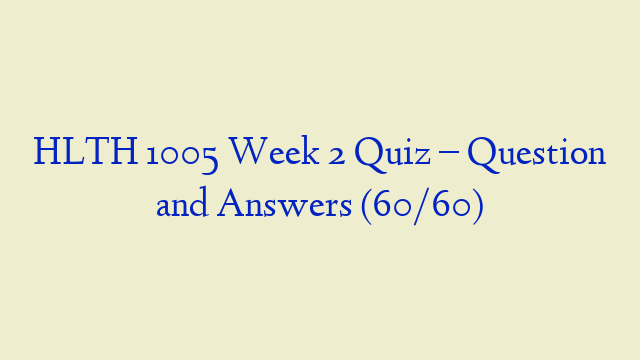Description
HLTH 1005 Week 2 Quiz with Answers (60 out of 60 points)
- When a professional’s services are generally accepted and are legitimized, they impart _____ to the profession.
- All of the following are elements of the policy cycle, except:
- Hospitals in the United States evolved from:
- Health policies are used in what capacity?
- In the pre-industrial era, much of the medical care in the United States was provided by non-physicians.
- The Donabedian model includes all of the following elements except:
- All states are required to have the same set of eligibility requirements for Medicaid.
- Healthcare in the United States can best be described as:
- All of the following were identified by the Institute of Medicine (Crossing the Quality Chasm, 2001) as areas for quality improvement, except:
- When hospitals first emerged in the United States, they were used primarily by the wealthy.
- During the first decade of the 21st century, the U.S. healthcare delivery system began to shift its emphasis from illness to wellness.
- What is an interest group?
- In the United States, the primary type of collaboration between public health and the private practice of medicine is the requirement that private practitioners report cases of contagious diseases.
- How has Medicaid created a two-tier system of medical care delivery in the United States?
- A service is cost-efficient when:
- Prevention and lifestyle behavior changes to promote health are not major foci of the medical model.
- What is the role of states in U.S. health policy?
- Medical care in pre-industrial America had a strong _____ character.
- Compared to other nations, the United States uses a larger share of its economic resources for healthcare.
- Healthcare costs for the elderly are nearly three times more than those for the non-elderly.

